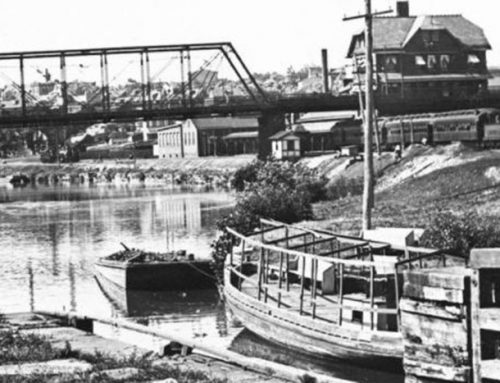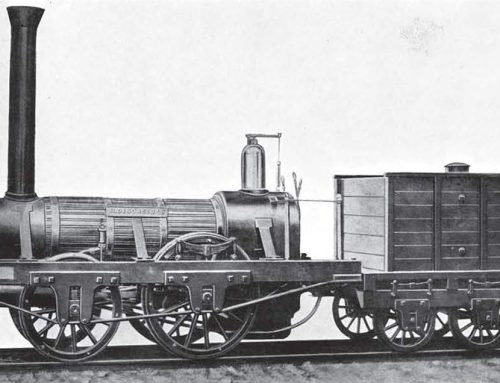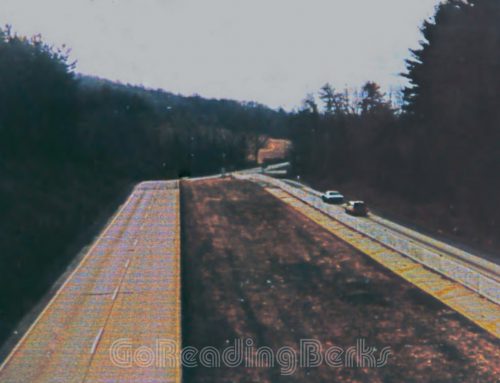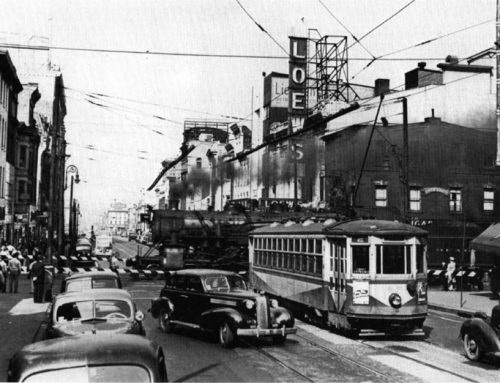Electric lines came early in Berks, the East Reading Electric Railway enjoying the distinction of being one of the oldest electric lines east of the Mississippi, and dating from 1888, the year of Frank Sprague’s successful electrification of the Richmond, Virginia Street Railway which ushered in the electric railroad era.
Below: East Reading Railway.

Streetcars provided a convenient and affordable means of transportation for urban dwellers. Reading, Berks County’s most important city, laced with 35 miles of track within the city limits, formed the hub for 85 miles of suburban track radiating to five points at the borders of the county. Cars on all of these outer lines passed the corner of Fifth and Penn Streets, as did those of the city lines, with the single exception of the “Eighth Street Flyer.” No passenger car ran beyond the county limits, although connections could be made for Allentown, Lancaster and Philadelphia.
Below: Trolleys of Reading & Berks County.
No one line in Berks County is best remembered for reasons of construction or size or speed. All were of the average, work-a-day type, furnishing just transportation. The city cars were those found in most urban areas and the location of the city of Reading, at almost the geographical center of the county, fostered sameness in the five radiating suburban arms. The longest, going northeast to Allentown, ran for 25 miles within the county to the transfer at Kutztown; to Boyertown 22 miles east; to Womelsdorf 15 miles west; to Adamstown 12 miles southwest and to Birdsboro 10 miles southeast. The two mountain roads wound around the hills for 7 miles each. 35 miles of track lay within the city. The absence of de-luxe service or equipment was reflected in the austerity of the terminus m Reading, a mere widened part of Penn Street, between Fourth and Sixth Streets.
Below: Track Map – Berks County Pennsylvania – Use mouse or finger to zoom.

The Reading horsecar lines and the East Reading Electric Railway Co. merged to form the Reading Traction Co. in 1893, appended the Reading & Temple Electric Railway Co. in 1894 and the Reading & Womelsdorf Electric Railway in 1895.
Below: An early City Passenger Railway Co. horsecar at Eighth and Spring Streets.

This aggregation was succeeded by the United Traction Co. in 1896 and in turn by the United Power & Transportation Co., controlling lines in Lebanon, Wilkes-Barre, Wilmington, Chester, Trenton, Norristown and Philadelphia, in 1899. The Neversink Mountain Railway and the Reading & Southwestern Railway Co. in 1901, the Oley Valley Railway Co. in 1902, the Birdsboro Street Railway Co. in 1904 and the Adamstown & Mohnsville Electric Railway Co. in 1905, became part of this huge corporation. The Allentown & Reading Traction Co., an assembly of the Allentown & Reading Street Railway Co. and the Allentown & Kutztown Traction Co. in 1898 and the Kutztown & Fleetwood Street Railway Co. in 1902, used the tracks of the Reading & Temple to enter Reading.
In 1910, began an era of complicated multi-level ownership of the system, when on January 12th the Reading Transit Company was chartered by the Eastern Power & Light Corp. to lease the United Traction Company, the Schuylkill Valley Traction Company, the Lebanon Valley Street Railway, the Oley Valley Railway Company, the Neversink Mountain Railway Company and the Metropolitan Edison Company, which was accomplished in February. The Eastern group turned management over to W. S. Barstow Management Association.
Further reorganization took place in 1913, when the Reading Transit Light & Company succeeded the Reading Transit Company.
In the early 1930’s, after a short 40 years, Berks’ interurbans flickered out, one by one, except for the old Reading & Southwestern to Mohnton, which, artificially sustained by legislation and technicalities, hung on until 1952.
On January 7, 1952, streetcar No. 807, route 16 Mohnton made its last run, ending trolley car service in Berks County. The event was captured in video. The streetcar was built in the Reading shops in 1924 and had 44 seats. It ran from Reading to Shillington and Mohnton before returning to the car barn at 10th and Exeter streets. Ten minutes after the trolley returned, the first Reading Bus Co. bus left on the same route. The event brought to a close the 78-year history of the Reading Street Railway Co., which began in 1874 with horse-drawn cars.
Below: Streetcar No. 807 last run.
Trolley riding was never boring here, by virtue of the variety of experience along the way. With the exception of the line to Womelsdorf, which lay, throughout its length, along Harrisburg Pike, the suburbans ran almost entirely on private right-of-way, once they crossed the city limits. Because of this, the abandoned roadbeds remain visible to this day over a major portion of the routes, a fact of unusual satisfaction to trolley fans. Tracing these old runs, one is struck by the beauty and scenic variety of the “unimproved” areas where they remain, but shocked by the mounting, sprawling shopping center horrors. Going through Boyertown, to follow the Oley Valley on the way to Reading, for example, we pass with dramatic suddenness from Montgomery’s rolling meadows to the more rugged terrain of Berks. Passing “Devil’s Hump” on the left we travel a few miles of easy grades along Ironstone Creek before the long climb approaching Shanesville. Here the steepening hills, no longer to be denied, required two horseshoes (still plainly marked) to set the grade. After a descent, longer than the rise, we reach Manatawny, gateway to a broad valley, where the trolley line followed the natural, sweeping contours of the land, skirted Schwarzwald Hill on the right and headed for the pass between the hills surrounding Reading. The trolley avoided, prophetically perhaps, the obvious and direct route into the city, swerving sharply to the right to make a big loop around Carsonia Park.
The glorious lines of the past, benefiting from their surroundings, would be totally out of tune here. In their contrast to modern life, perhaps, lies the charm of the trolleys and the fascination of their pursuit. Old-fashioned? Nostalgic? Certainly so, but reflecting an era of life in America, forever gone, forever to be cherished.
Below: We lost our last streetcars on January 7, 1952. Reading Street Railway Co. in Reading, Pennsylvania finally received Court approval to terminate the last trolley line, Route16 Shillington/Mohnton on that sad date, replaced by those 700 series GMD buses. A month later all remaining 800 series cars (except the 807) were burned after removal of tracks for scrap. The end of an era and a 7-cent transit fare.

Below: Northeast corner of 4th and Penn showing B.J. Saylor foods, Reading transit trolley car 809 in the foreground and the former Reading Girls’ High School in the background. The school was razed in 1961 following completion of the Special Education Center at Old Wyomissing Road and Parkside Drive, South.







Leave A Comment